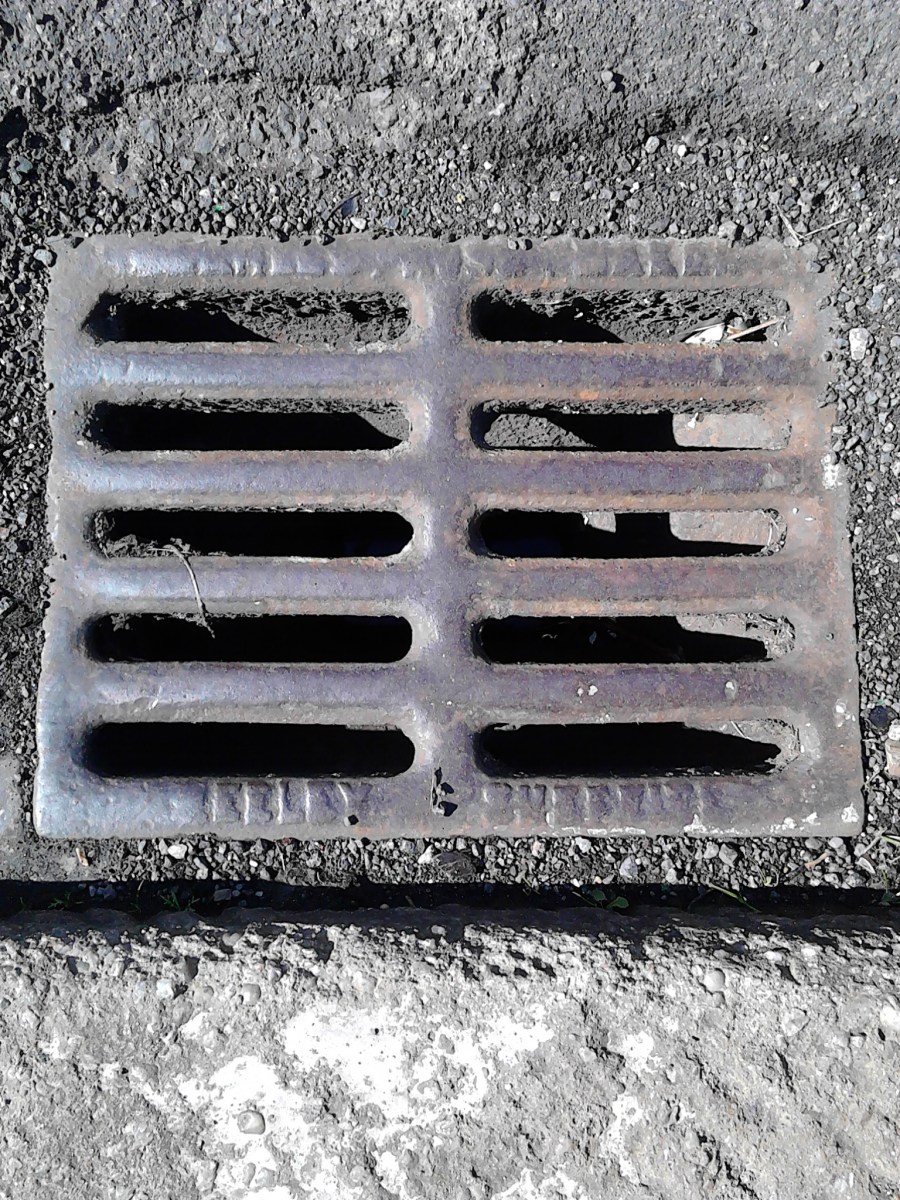Search the Community
Showing results for 'coal pit lane'.
-
I have found it mentioned in the Friends of Ecclesall Woods website. They think it's a trackway rather than a tramway. Friends of Ecclesall Woods It's not clear at all what it was used for but they have this to say about it. There have been several theories about the purpose of this trackway. The most likely is that is was used by packhorses or mules. The centre gap between the stone lines would have been filled with small stones, to help the heavily loaded animals keep their footing. They could have been carrying coal from the Dore mines down to Abbeydale Hamlet.
-
Being from Manchester, Rob123, you will also have noticed that long rows of terraced houses on a hill there have a continuous, sloping roof line and a single, long gutter with occasional down pipes running full length of the row as they did not step each house on a slope, as in Yorkshire. These can be up to 50 or more houses long. Opposite to Attics, or Garrets as we called them, our long-gone terrace house in Pitsmoor had two bricked-up doorways in the cellar, once used for escape routes if bombed in the war, one either side to each adjoining house , the bricked-up doorways being clearly visible against the white-washed cellar walls ( white-washed walls in a coal cellar !). I presume these escape routes were dictated by the local authority. When the bags of coal were being tipped down, someone would stand at the top of the cellar steps to count them down, just in case ! In addition to the cellar proper being used to store foodstuffs, many items were kept on the 'cellar-head' at the top of the cellar steps. Most people in the area had a clothes mangle down in the cellar; what those women went through !
-
Ours had the black range in the back cellar, a coal cellar and a food cellar with a thick marble slab to keep food cold. In the 1920s (guess) a Yorkshire range was installed in what is now the dining room. That was removed in the 50s when a gas cooker was installed in the kitchen (which previously just had a sink. I too slept in the attic and well remember seeing my own breath and ice on the inside of the window in the winter. In the summer chocolate would melt. It doesn't get quite so extreme these days. The stairs get steeper every year though.
-
Your Great Grandfather couldn't have worked there long as the factory wasn't built till 1866 on the Meadow Hall site. Bang on what is now the Shopping Centre. They were famous for making tank engines and shunting engines used in industry and coal mines. They continued to make engines till 1965. There was a book made of the company that should give you more information. https://www.amazon.co.uk/Yorkshire-Engine-Sheffields-Locomotive-Manufacturer/dp/0752445308
-
I was an apprentice electrician at Westthorpe in the mid 1950's; the colliery was connected underground with Holbrook as an escape route for either colliery in case of emergency and for enhanced ventilation purposes; There was also a pumping facility in Holbrook pit bottom which helped to keep water levels under control for both collieries. These facilities were maintained when Holbrook officially closed in 1944 until its demolition in 1956, by Westthorpe officials and craftsmen. The collieries were approx one and a half miles apart and the roadway linking the two together had to be periodically inspected by a deputy with a flame safety lamp to keep testing for gas along its entire length; I once went with a deputy and an electrician who was going to examine and maintain switchgear which was used to control the water pumps and lighting in the pit bottom. It was very hard going, walking and sometimes crawling along the roadway which due to subsidence and floor lift due to general depreciation was no more than two foot six high in places. All this whilst having a heavy tool bag ,water bottle, snap tin and cap lamp battery on my back and around my waist, and believe me it was very scary for a young lad like me. An experience I will never forget ! On other occasion's when we didn't travel through the roadway, we were wound down the shaft; The winding engine was a steam engine and the coal used for the winding engine was brought in from Westthorpe. Descending the shaft in the cage was also a very hairy experience, due to the general decline of the equipment and safety items being missing from the shaft side we had to jump across a gap of about eighteen inches into the cage, although this gap appeared to be more like three feet, and you closed your eyes when you jumped across. The cage was lowered very slowly because a good many of the guide ropes which keep the cage stable in the shaft were missing or damaged and you could hear and feel the cage buffeting into the shaft side! When you went down the shaft you took a couple of buckets down with you to bring them back filled with coal for the fire in the pit top cabin to mash tea. When the colliery was demolished in 1956 the ruins were used to stage a Civil Defence exercise: St Johns Ambulance Brigade personnel carried out rescue procedures, and Dr Charles Lipp from Killamarsh officiated. I was used as one of the casualties!
-
I went in the elm tree and remember gwyn being the landlady,she was fearless.After the elm tree she moved to the relative calmness of the yew tree at Coal Aston.
-
Hi everybody, you may well have been wondering why I have not contributed to this topic earlier, but as with everything, time is of the essence. I have been spending a lot of time looking at all the evidence at my disposal, plus some additional research which enabled me to come up with what I think may well answer a lot of the questions raised. With regard to the newspaper article regarding Worrall's pit, just off Rotherham Road at Killamarsh, I can say that I am sure that this is the colliery operated by Mr John Joseph Worrall which he took over from his grandfather. It was situated on "Norwood Bank", midway between the Midland railway and The Chesterfield canal close to the Norwood Colliery on Rotherham Road. Known locally as "Norwood Lane".The colliery closed for three years in 1910 due to a slump in the coal trade and on resumption of work continued to work for a further 40 years until its closure in 1943. All the eight men working at the colliery were members of the Worrall family. Coal was drawn from the 60 foot shaft by a horse operated "Jenny Wheel". See below the photograph which was taken of Mr Worrall on Norwood Bank in 1939, standing beside the Jenny wheel with the horse harnessed to the operating arm of the wheel. If you look very closely to the right of the photo you can see the horse driver holding its harness! The diameter of the jenny wheel was such that enough rope was wrapped around it to allow for the depth of the shaft so the horse would only have to walk for one revolution of the wheel to raise or lower the coal tub up or down the shaft. . LUKE WORRALL, of Mosborough who was a farmer and local shopkeeper,went into partnership with a man named Hodgson and sunk two pits in 1830, one in "Beighton Hollows" on Hollow Lane which is just off the main Rotherham Road at Halfway and another smaller one further down the village, but I don't know its location. Hodgson's daughter was killed in the second pit just before Christmas in 1837. The Beighton Hollows pit is the one which I believe was the one which James Walton was referring to in his publication. I knew his son very well; as was mentioned earlier James was not a Councillor but his wife Dorothy was; She was the Lord Mayor of Sheffield for a While, James becoming the Lord Mayor's Consort. Worrall was a shrewd business man and very little money changed hands between him and his employees as they were forced to buy their food and clothing from his shop. Vegetables,milk and eggs e.t.c. were all produced on his farm, giving him the monopoly in the local community. Re Holbrook and Norwood collieries :- Between 1870 and 1872, J&G Wells sunk 3 shafts at Holbrook each being 13 feet in diameter. The shafts were sunk in close proximity to each other. No 1 shaft into the Silkstone seam, and a pumping shaft also into the Silkstone seam. The No3 shaft was sunk into the Parkgate seam. The photo below shows all three shafts close together along with the three winding houses, but it is of poor quality. The No 4 shaft which was a pumping shaft was sunk between 1884 and 1885 near to the roundabout in front of Morrisons car park on Rotherham Road. Although this was primarily a pumping shaft a few men worked underground and brought out a small amount of coal. Holbrook colliery had a bank of coke ovens and a wooden framed cooling tower. The coke ovens were modernised in 1908 but were eventually closed in 1935. I have been underground at Holbrook several times, but I will tell you about that later in a new topic. The photo below shows all three shafts close together, but it is of poor quality. Between 1865 and 1867 the Sheepbridge Coal and Iron Company sunk a shaft at Norwood, off Rotherham Road Killamarsh, into the Top Hard seam at 510 feet; I am very proud to say that my great,great grandfather Elijah Wain was the master sinker; He and his team completed the sinking without a single accident of any kind. Why the shaft was known as the No2 Shaft remains a mystery because the Holbrook and Norwood collieries were not connected and were at least three miles apart. Common belief is that J&G Wells gave it this name when they took over the Norwood colliery? I lived in Rotherham Road until I was 25 years of age and as a child I played around the colliery yard watching and riding on the shunting engine under the watchful eye of Mr Smith the engine driver who sometimes let me operate the regulator and drive the engine and operate the whistle. SHHHH! Those were the days. The company deepened the shaft to 1,000 feet into the Sitwell seam when they took over the colliery in 1916. The third seam, the Thorncliffe was reached via a Surface drift which was driven some 360 yards away from the colliery shaft. My grandfather worked underground at the colliery and non of my family could remember a second shaft. The colliery had a bank of coke ovens and a wooden framed cooling tower. A gasometer was near to the colliery just across the midland railway line. Look below for old photo of Norwood colliery and postcard from 1935 which shows Rotherham Road with Norwood colliery at the bottom of the road. You can clearly see the headgear, winding house,chimney and the coke ovens cooling tower. There was never a hint of the colliery having any connection with Holbrook only through ownership and it was always called Norwood Colliery. I hope this has helped answer some of the questions on these topics and look forward to your comments. Regards, Ken.
-
The paragraph describing Worrall's coal mine sounded familiar, so I looked through my reference material and... Streetfield, Worrall and Holbrook Collieries The piece by Alan Rowles puts the location somewhere along Hollow Lane at Halfway, whereas the location in your description I would have thought was more like the small coal mines behind Barbers Row in Killamarsh? You can see the cluster of small collieries on Hollow Lane, at the bottom left hand corner of this map Yorkshire CCXCIX.NE - 1902 (which also begs the question whether the Pumping Shaft of Holbrook Colliery, also shown on the map, is the elusive Holbrook No.4???) I'd be very interested to see your post on extracts from "Halfway and Holbrook the Early Years" and would like to try and get a copy of it if possible. When you say it was published privately, do you know if it was ever on sale and does it have an ISBN number?
-
wI spoke to my friends this afternoon and nothing really new came up about Holbrook except, forgive me if it has already been mentioned, a1939 article from the Star about Worrall's coal mine. The article reads:- "At a one horsepower coal mine nestling in green fields away from the main Rotherham Road at Killamarsh Mr John Joseph Worrall, is owner, manager, wheel wright, blacksmith, tub repairer and anything else the occasion demands. The mine has been in his family for over 100 years and it still continues to work at full pressure. It was sunk by the present owners grandfather and after closing for a short time, re-opened in 1913.Occasionally, the mine which is run by eight men and Mr Worrall has produced as much as 150 tons in a week but today weekly output is about 50 tons. Coal is brought from the depths of the 60 feet deep shft by means of a horse-operated "Jenny" wheel. The shaft is hewn through hard rock and is about 10 feet wide." The mine lasted a few years longer and was dismantled in 1943 The above is taken from an illustrated booklet entitled "Halfway and Holbrook the Early Years" by James Walton which was published privately in 1996. The booklet contains a few illustrations of Holbrook Colliery including ...the Colliery Offices ,the Lamp Room, a party of youngsters walking at side of Pit Chimney, a semi-dismantled view of the cooling towers,,,,in snow and Holbrook Colliery Ambulance Brigade. I am pretty useless with IT but will try and post them on here.
-
I was with an old collier ( Renishaw Park) this afternoon whose father worked at Holbrook until it closed. He was then transferred to Norwood Colliery where the work was considered to be hard...the seam was only about 6 inches thick and had to be worked by pick and shovel lying on ones back...that really is the "price of coal". Norwood Colliery , he tells me, is now occupied by an industrial estate ( Coopers Tours and Coopers Transport occupy most of the area.) He then told me that after Norwood was worked out his father went to Waleswood Colliery. The photos are revealing especially those of the baths...which for all the world looks to me like a cooling tower for the pits own electric generator.
-
I don't use facebook but would like to see the map. I think I may have seen passing reference to a beer house down there, but can't for the life of me think where, I've read so much over the years. My own interests are mainly across the road on top of the retaining wall (ie the Midland Railway station). Looking at the sketch above: The road visible on the left is Well Road, Oak Street is behind the artist. Maps I have show the area on the left to be the gardens of Springfield House, the house itself being set back from the road. The station was altered around 1900 and the road widened and realigned around 1902 when the ramp up to the old coal yard was removed. The girder bridges over Gleadless and London Roads were widened which meant the loss of buildings there previously. I think the cinema was built around 1911. On a map pre 1900 there appears to have been one building at the bottom of Gleadless Rd then the railway bridge, then a further four buildings before Oak St. I hope that may narrow down your search.
-

Poor Houses being called Barracks
ayfer replied to Judith Hague Pearson's topic in Sheffield History Chat
There was an area of housing somewhere at Gleadless/Hollinsend known as the 'barracks'. I think they were poor housing associated with the nearby coal mines. -
Rlongden... As you see the pit head foundation in your picture, looking at it from the footpath, if you walk a little further south there's a small unpaved path that goes parallel with the track bed, follow that and to your right after about 50m, you will see there is some chain link fencing albeit dilapidated, get through that and there's a pipe that comes out the ground surrounded by some loose looking gravel. This might be the shaft cap. I'm informed by the Coal Authority that there's 3 shafts , 2 filled in 1959, then another that was unfilled until the late 1980's that was filled and capped in around 1988. This may be the one I've seen. Could be wrong but go and have a look. Take care though!
-
Extract from Mexborough & Swinton Times Issue Saturday March 26th 1910 Groping his way along the canal bank at Swinton, a “Times” man, the other evening, stumbled upon the most interesting old couple it has been his good fortune to meet of late. Their names are George Scholey and Elizabeth Scholey, and they live in a place called Kemp’s Yard, down by the water side. As they have lived on and near the water the greatest part of their lives there is nothing strikingly peculiar about this. George is 76 years old and his good lady will be eighty on Good Friday. George, therefore is hopelessly the junior, and the missus calls him “my lad”. George Scholey was born at Bolton on Dearne into a water-side family, and at the age of a few weeks he was taken on board one of the canal boats plying between Sheffield and Goole. He has been connected with the water ever since, and a fine fresh healthy life it is. His wife was born at Bramham, a little village near Tadcaster, and she went into service at Sheffield, where she met George Scholey and married him 58 years ago, going to assist him in the management of his boat. There are hardships in the canal service if, as you lie on your back under the trees some warm, hazy summer afternoon, and watch the keels floating lazily down the water-way, you form the impression that the bargee’s life is the life for you, just put a question or two to George Scholey before you allow the impression to take root. He will tell you that it is a constant round of tugging, loading, unloading, cleaning, and sleeping. It is health, and the old men it produces are not old men before their time, because it is the fresh-air life, and whatever dissipation the boatman may go in for, is counteracted by the hard work he has to do. George Scholey worked in a boat as soon as ever he had the strength to do anything useful at all. At the age of nine his father set him to unload a boat along with a man. That was at Lincoln, and it was a cargo of coals they were getting shut of, and he did his share. The benefits of education never came his way. He simply had to work until he could work no longer. He retired from the water last August, but to-day he can be seen pottering about the locks at Swinton, helping through captains who were toddling infants when he himself was a captain of ripe experience. And in return they gave him a bit of coal. That is a great concession to George, for, as he explained to our man. “You can’t get a deal of coal out of the Old Age Pension; it isn’t much to live on”. “So you do get the Pension?” our man enquired. “Oh, yes, we get five shillings each”. “It’s a grand thing is the pension,” broke in the old lady. “The man that brought it out ought to gain Heaven, I’m sure. It’s saved lots of decent old folks from having to go to the Workhouse”. George Scholey is the last survivor of a large and well known canal boat family. His brother, who kept the ferry at Mexbro’, died last year. Mr. and Mrs. Scholey have also suffered bereavement in their own immediate family. They have outlived eleven sons and daughters. There are two daughters and a son remaining. The son is a schoolmaster. The father cannot read his own name. At one time George Scholey was in fairly comfortable circumstances. His wages as captain of a keel only amounted to a pound a week, but that was reckoned fairly good pay at the time, and by industry and perseverance, he acquired a boat of his own, which he called the “Industry”. That was just about the time of his marriage. But trade was not too good, and the Sheffield Flood settled his financial hash. It carried away the big bulk of his moveable property. He was lying on the canal on the night of the Sheffield Flood, that night of horror in March of 1864. Curiously enough Mr. Scholey never knew anything about the flood at all until it was over. He slept peacefully through it all. The canal lay well away from the track of the terrible torrent. The first he knew of anything untoward was a rude awakening from a mate of his. “Come, get up, George,” said the man. “You’ll lie abed while all Sheffield’s flooded out”. George went and explored. “I shall never forget the sight while ever I live,” he said. “It was fearful. I saw dead bodies floating down the roads. I saw dead bodies in the houses, just as they had been drowned. It was terrible. I did not stay very long, you can bet. I came away with the vessel on the Monday morning”. What food for gossip for the old cronies of the canal that Sheffield Flood must have been! Scholey has been principally engaged in carrying coal, though he can remember the time when there was no coal around this district to carry. The first pit he remembers being sunk around here was Charlesworth’s Warren Vale pit, the coal for which is now drawn out of Thrybergh Hall pit, while the old Hemingfield pit started shortly after. Prior to that he used to do a good trade in limestone from Sprotboro’ to Sheffield, and he carried an occasional cargo for old Mr. John Lewis of the Swinton Potteries, which was then a prosperous concern under that management. He also used to “run” over to Elsecar for hard coals in the Potteries. It was in this direction that the old man met with the only accident of his career at Aldham Mills near Wombwell. He was jumping ashore when he caught the mooring rope with his foot, and, falling full length, broke his wrist and he stood the excruciating setting operation without a murmur. Unfortunately the bone was not properly set, and resulted in the partial disablement of the old boatman. For he was an old man at the time, the accident occurring during the time he was working for Mr. James Beevers, of Mexboro’, which was his last period of service. Mr. and Mrs. Scholey are, we believe, the oldest couple in Swinton. They are an intelligent and happy pair, and are well content to spend the evening of their lives watching the boats go by. Old George is neither a teetotaller nor a non smoker, and he has a grounds for thinking that his moderate indulgence in the luxuries of beer and bacca does him no harm. An occasional gill of beer, a weekly ounce of tobacco – that is all. But no doubt he would miss it if it were not there.
-
Deeply saddened by this, the closure of the last working deep-mine in the United Kingdom. Whilst I can sort of understand the concerns that have been expressed, and continue to be expressed about the environmental impact of carbon fuels, I still think that more time, investment, and effort should have been expended in the past, in finding a better means of using our probably still vast deep-coal reserves in a more environmentally friendly manner. I cannot, but wonder, that as so much of our energy requirements are now having to be imported, as either oil, or as natural gas, as to whether, in years to come, that this will be yet another strategic blunder that we come to regret. A little bit like the short-sightedness of those decisions taken in the 1960s and 1970s, involving the closure of certain of our then, extensive railway system.
-
I think the "Crofts" notion comes from the fact that many "navvies" were Irish and that the Irish had a large community around the Crofts. One company I worked for had had their own barges which, at some point, were used to bring in coal for the furnaces...All that was left of them were a couple of semi-submerged wrecks in the Don... One old mill hand always told the tale of his being born on one of them and living there as a child.
-

A Glossary Of Words Used In Sheffield 1888
Old rider replied to tozzin's topic in Sheffield History Chat
I had been told Coal Aston was originally called Cold Aston. Looking up Dronfield history I find that the Coal Aston mine was opened in 1785. An old ordnance survey attached shows an old mine in the green area. An older map shows some woods on the Sheffield side of Coal Aston as Coal pit woods. The history site claims Stubley on the other side of Dronfield was mined from the 16th century and Car Lane mine opened in 1795. What is now Dronfield Sports & Social club on Carr Lane is known to be originally a Miners Welfare club, and opposite is the Miners Arms pub. I was told the mine there was a drift mine. There was also a mine at the top of Mickley Lane where some new houses have just been built. When this site was Standall Tools the upper car park was actually on top of the old mine spoil tip, and a square brick structure in a service yard was said to protect the old mine shaft. -
I don't know if any members have been on the website Internet Archive but its very good, I typed Sheffield in the search and I was amazed with the books and pamphlets that lay in Universities in America and Canada. This is just a snippet which I found very interesting, take note of the name COLD ASTON and not COAL ASTON as used today, I don't think there were any coal mines near there, perhaps someone can enlighten me: I've left the original spellings and dialect in. It is considered good luck to meet two magpies, but bad luck to meet one. Of the magpie people say ' One for bad luck, two for good luck, three for a weddin', and four for a berrin If one robs a swallow's nest or a robin's nest it is said that the cows will give blood in their milk. If one finds a horse-shoe he should take it home and nail it to the stable door. It is said that When the gorse is out of blossom, Then is kissing out of fashion. The gorse, it is said, never is out of blossom. I am told that these lines are quoted by the country people in Cornwall. When a lover was forsaken by his mistress, oval-shaped garlands, made of leaves, flowers, and ribbons, were found hung early in the morning in a tree near the house of the forsaken one. This was done in Cold-Aston fifty years ago. Morris dancers, who generally came from Whittington, used to dance and sing on 'the Cross' at Cold-Aston thirty or forty years ago. They were a very numerous body, and were gaily dressed in many-coloured clothes. I have seen ' Robin Hood's men ' dressed in green coats. It is said that if you hold a poppy to your eyes it will blind you. In Mid- Yorkshire the wild poppy is called blindybuff. If a bee-master, or person who keeps bees, dies, cake and wine must be given to them on the day of his burial, or the bees will die too. Some bees at Hazelbarrow in Norton languished and died, the reason being, as was said, that they did not partake of the funeral feast of their late master. It is said that the feathers of pigeons should not be used for stuffing pillows or beds, because a man 'cannot die' on a bed which contains such feathers ; by which is meant that he cannot die easily and without pain upon such a bed. Fynes Moryson, in his Itinerary -, printed in 1617, part iii., book i., says: 'The Italian Sansovinus grossely erreth in this kinde, being otherwise a man of great wit and iudgement, who affirmes that parents in England take the pillowes from the heads of their children ready to die, out of tender pitty and charity to put them out of their paine.' It is commonly said in this neighbourhood that people cannot die easily on feather beds, and that if a dying person is lying upon a feather bed it should be changed to a flock bed. Old nurses in this district used to take the pillows, if stuffed with feathers, from the heads of people who were about to die. This booklet is in the UNIVERSITY OF TORONTO LIBRARY
-
I have a snit of an answer to the location of the shafts at swallows colliery. When you go over the spoil from the garage end, you come out the other side then as the trees die down there is a manhole in the undergrowth. Apparently underneath this is a vent pipe approx 15" diameter. The shaft is unfilled with just a cap around the manhole. My source is the coal authority. How deep is the shaft does anyone know?
-
Stand House School was built on the site of the farm of the same name. Originally the site of sort of pavilion to watch the hunting of Deer in Sheffield Park. How long this pavilion was on the site is a mystery. The area wasn't mentioned in the Survey of 1637. However in 1699 a lease was drawn up between Richard Richmond and the Duke of Norfolk. We do know that the Stand was in the middle of "Blacko Pliane" named after the lumps of coal sticking out of the ground in various places on the what would be open piece of the park. That in the 1699 document has been dived into four sections one of which is called the "Newstand". J. D. Leader in his book about Mary Queen of Scots thought the Stand she had been taken to was the one at Stand House. However as T W Hall didn't find the 1699 lease till the 1920's, Leader wouldn't have known about it being called the New Stand in that. The farm for a while seems to have survived the creation of the Manor Estate and can be still seen in the aerial photos on the Britain From The Air website. Sometime before it's demolition Harry Cowlishaw managed to take this picture of the Farm House itself. The farm was removed with the construction of Stand House School in 1928. The Cowlishaws removed to the area around the Manor Lodge. I have recently seen some newspaper articles concerning the farm and I will upload these shortly. Meanwhile if anyone else has anything to add please do so.
-
From this site http://www.aditnow.co.uk/Mines/Mossbrook-Coal-Mine_9472/ "LOCATED EDGE OF LADYBANK WOOD AT ECKINGTON. THE MINE OPENED IN MARCH 1955 BY THE MOSSBROOK COLLIERY COMPANY LTD EMPLOYING 12 UNDERGROUND AND 2 AT GRASS. THE MINE CLOSED FROM SEPT 1956 TO MAY 1958 DUE TO FLOODING. THE MINE CHANGED HANDS A NUMBER OF TIMES BEING OWNED BY T.BEATTIE FROM 1961, HEYWOOD PLANT HIRE FROM 1965, STRETTON FIRE CLAY CO AND FINALLY BY THE DOE LEA COLLIERY CO LTD FROM 1971 TO CLOSURE IN DECEMBER 1979. BY NOVEMBER 1980 THE DRIFT WAS FILLED AND ALL BUT ONE BUILDING DEMOLISHED. UNDERGROUND WORKING WAS TOTALLY BY HAND AND HAULAGE TO SURFACE BY ELECTRIC ENGINE BUILT BY W & H NELSON OF MOSSEND GLASGOW. THE MINE WORKED THE PARKGATE SEAM." -------------------------------------
-

Made to Measure, Rother Valley Country Park
Unitedite Returns replied to shizzle's topic in Sheffield History Chat
Thank you very much for sharing - very interesting indeed. Of course, it did not all go strictly according to plan! The workings flooded quite badly in 1977, and as you can see from the attached image, the coal authority were caught a little unawares. -

Made to Measure, Rother Valley Country Park
shizzle replied to shizzle's topic in Sheffield History Chat
So is the water as deep as the coal seam extracted ? if so wow that's deep. -
Thanks Steve, great reading. This from a previous post regarding Rotherwood Hall :- It was the home of Richard Sorby Esq, Coal Producer b1806-d1862, he was the son of John Sorby who lived at nearby Orgreave Hall and founded the John Sorby & Sons edge tool business.
-
Charles Ross of Heeley appears on iron from Tramway covers to coal chutes, but this is the first drain cover I have seen (near Botanical Gardens / Ecclesall Road).



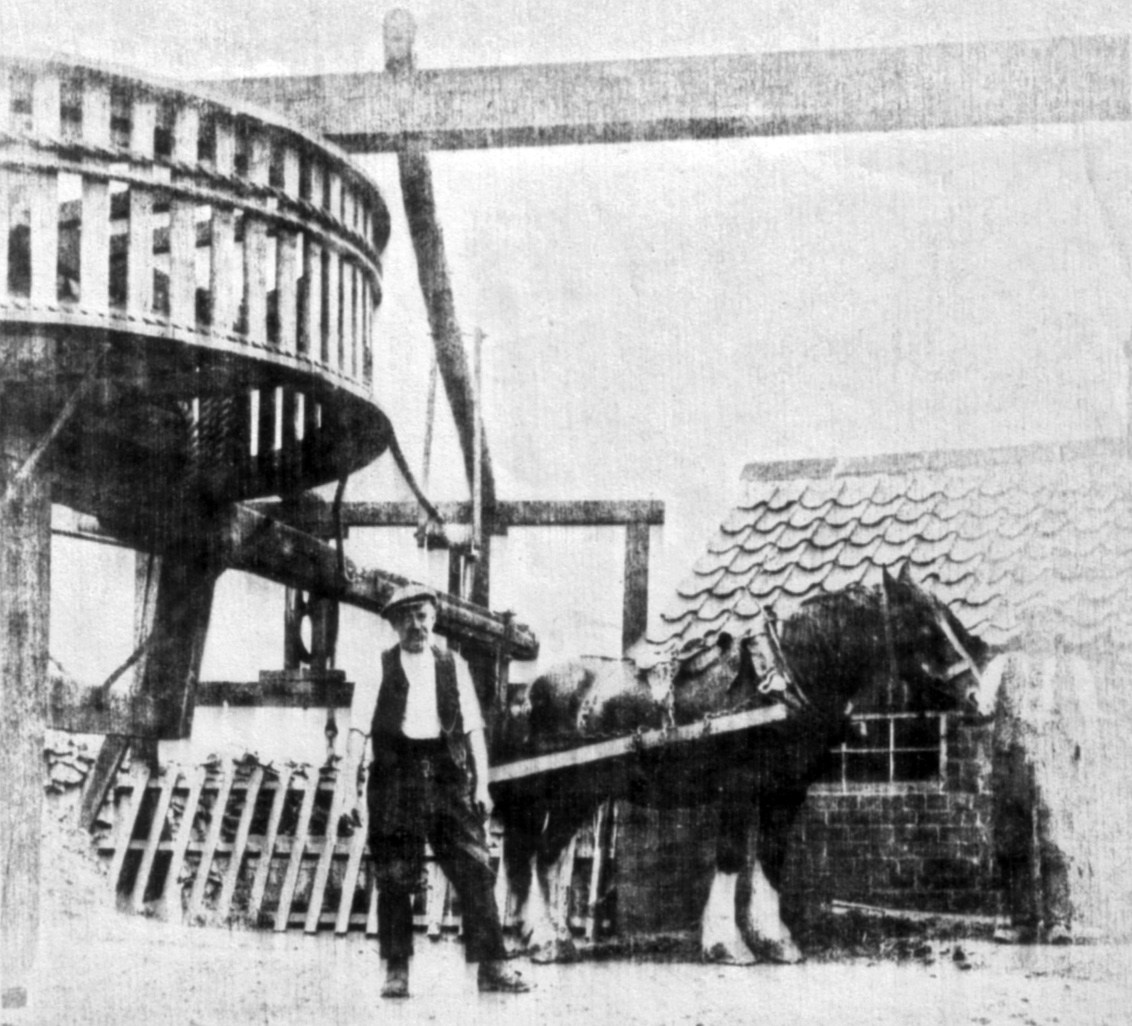
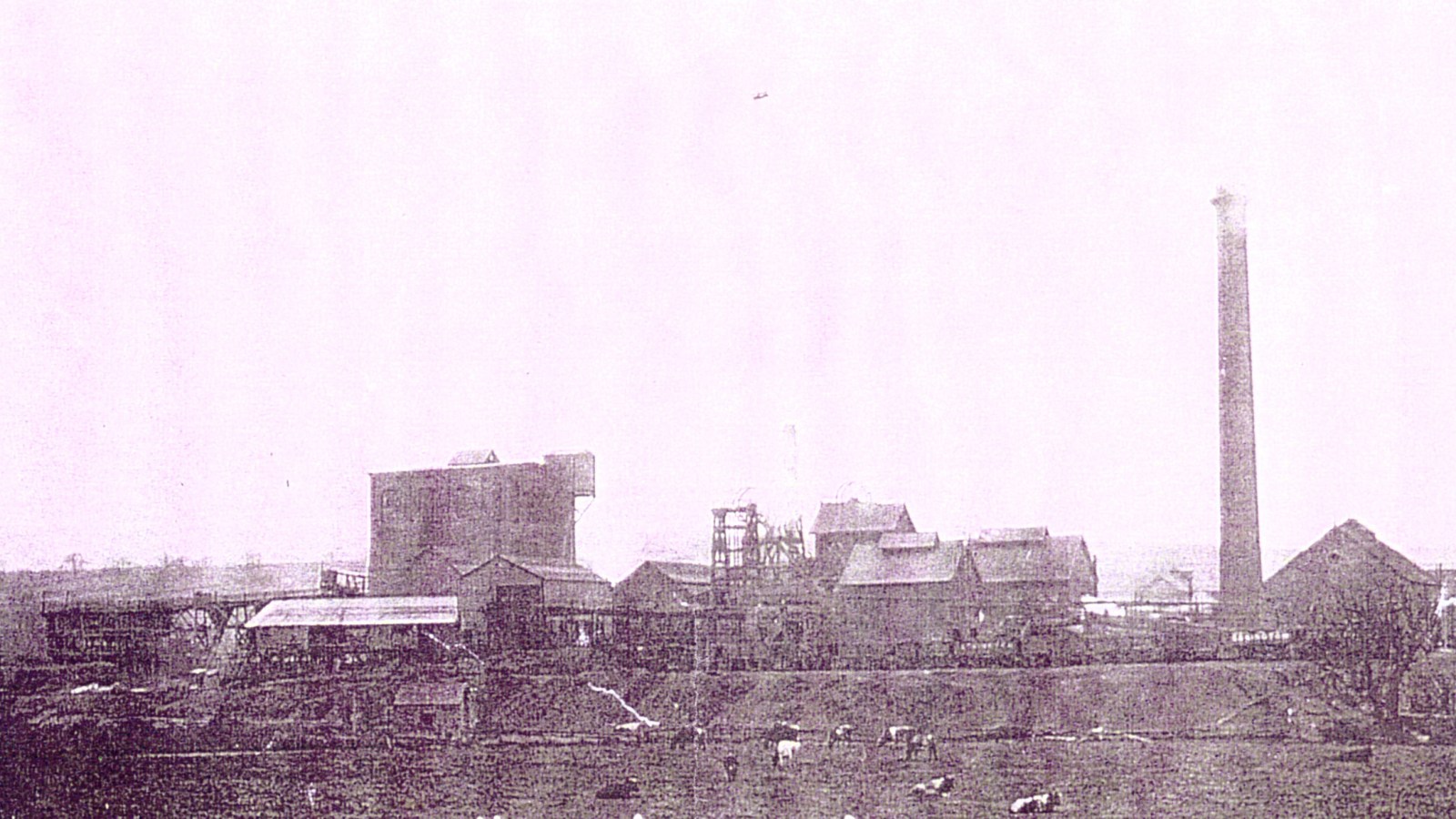
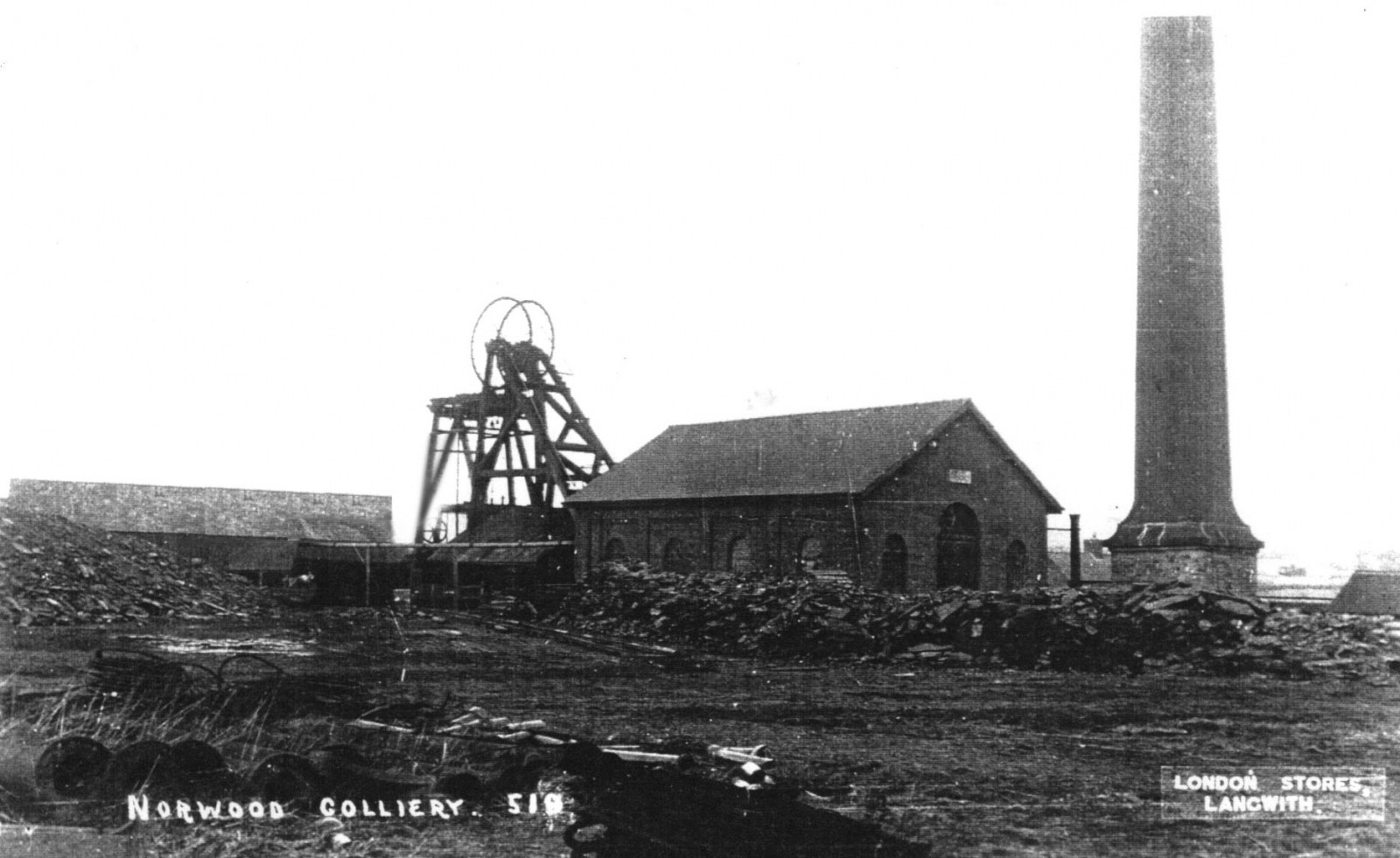
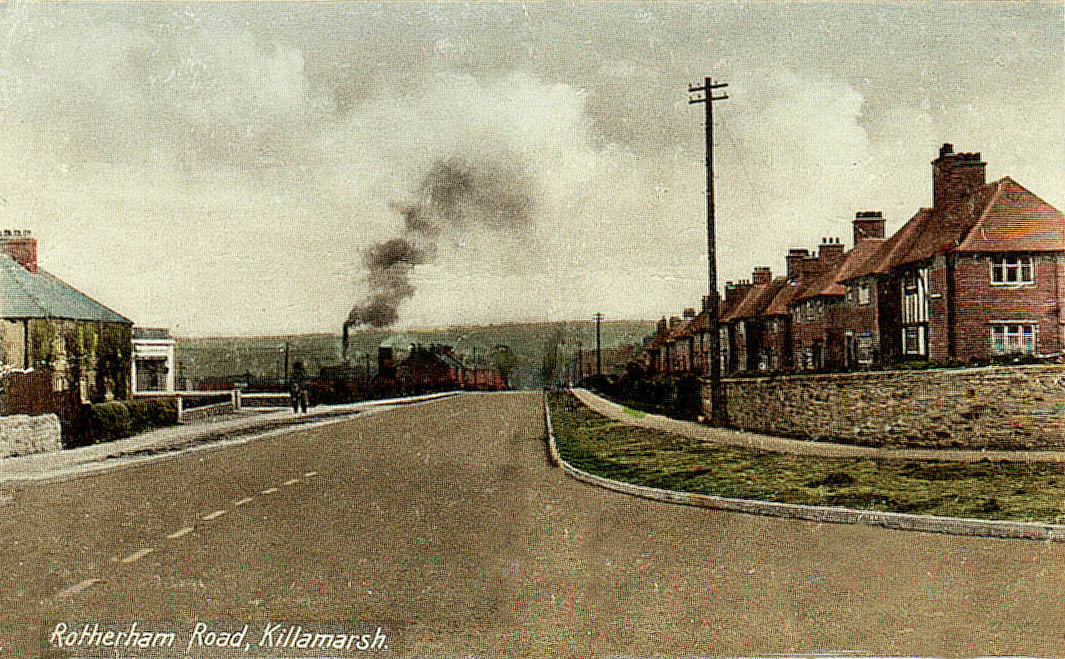



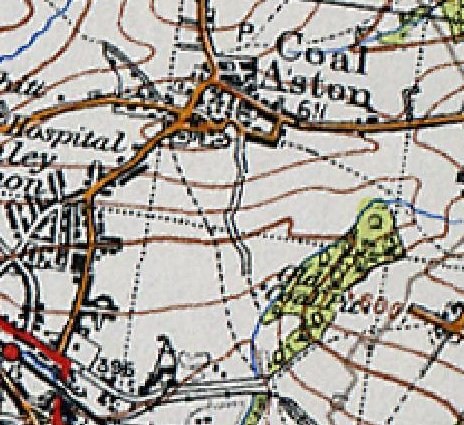

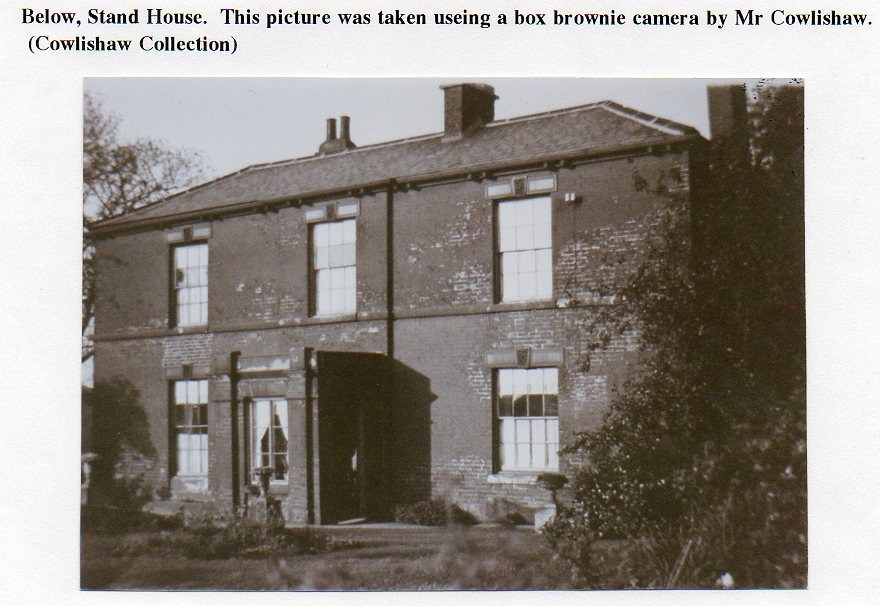


-16-06-1977.thumb.jpg.1dcb2c452a3d8214e95bbe912d374a42.jpg)


